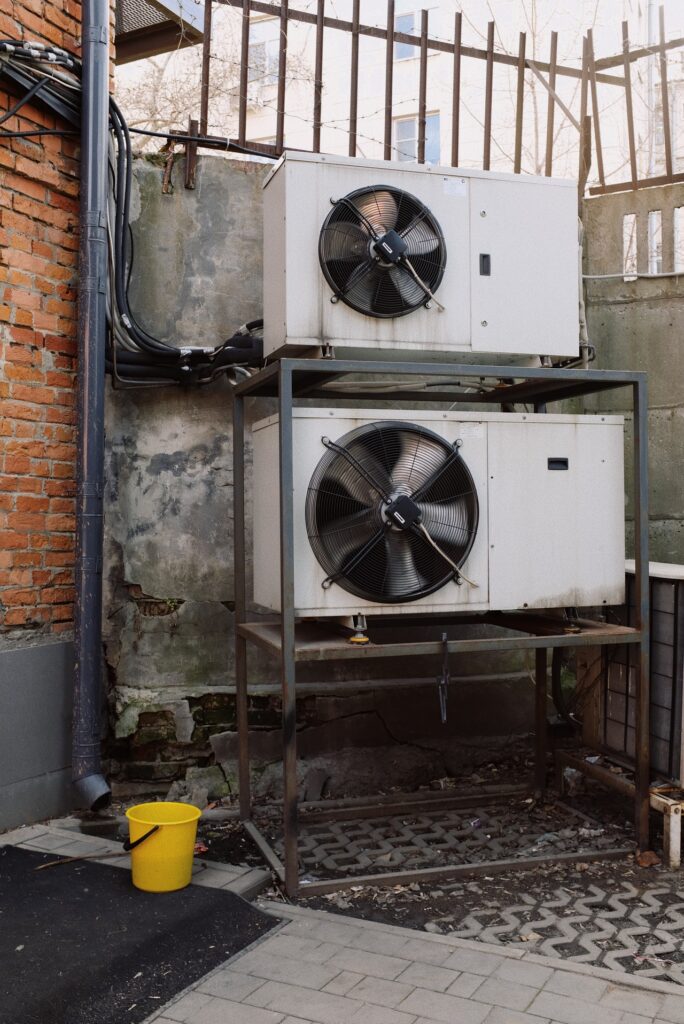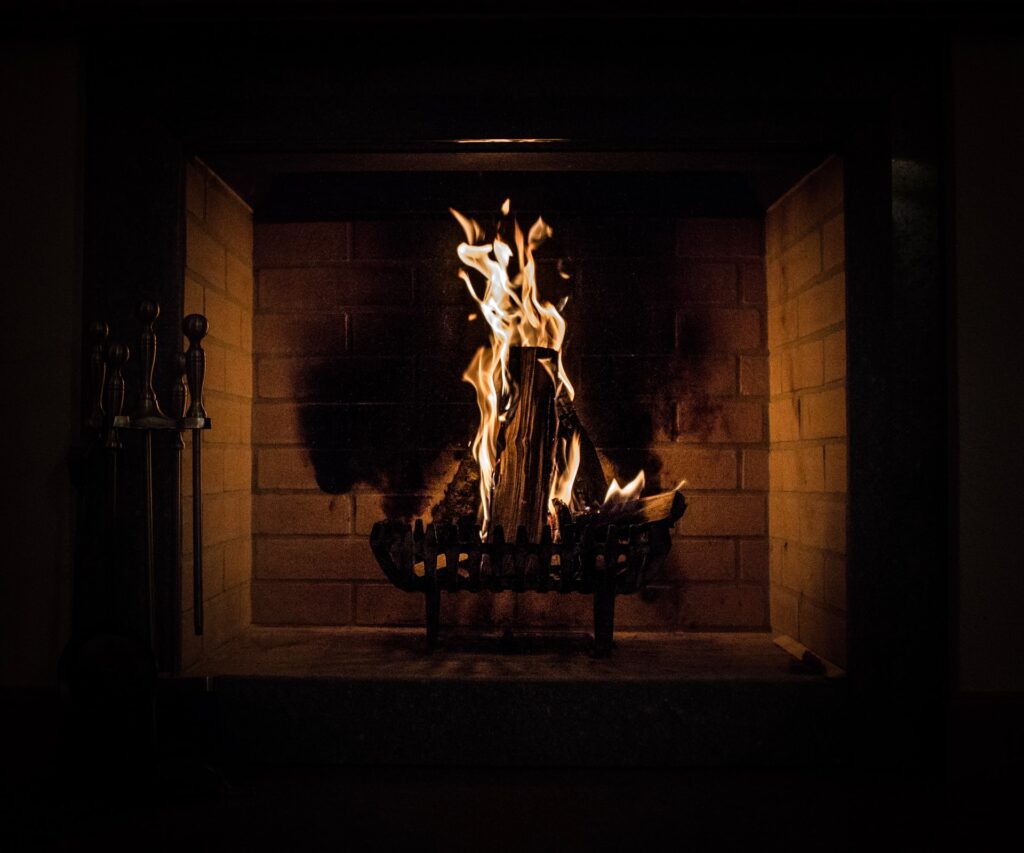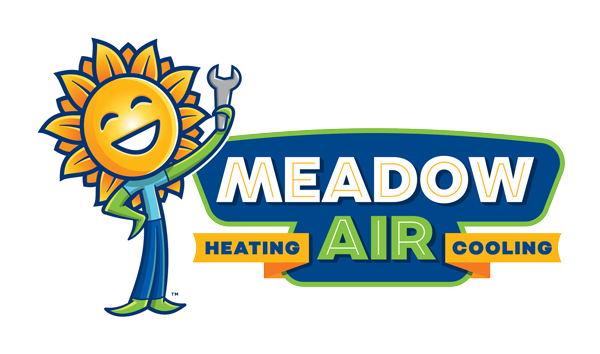Heat Pump Auxiliary Heat – Should You Use It?

Getting your home ready for winter can be a time-consuming task. One of the biggest things you have to worry about is keeping your heat pump working at peak performance.
It doesn’t matter if you’re trying to save money on your heating bills or want to make sure that you keep your home safe and comfortable, you still have to make sure your HVAC system is functioning properly.
Part of making sure your heat pump is ready for winter is using the auxiliary heat. Here’s what you need to know about this feature and whether or not you should be using it.
What Is a Heat Pump?
A heat pump is a device that uses a small amount of energy to move heat from one place to another. Heat pumps are designed to work in both cold and warm climates, and can be used for both heating and cooling.
In the winter, a heat pump extracts heat from the outside air and delivers it inside your home. In the summer, the heat pump reverses this process and instead, moves heat from your home to the outdoors.
What Are Some of the Benefits of Using a Heat Pump?
Here are some of the biggest benefits of using a heat pump.
- Cost savings – A heat pump uses electricity, which costs less than natural gas or propane.
- Energy efficiency – A heat pump can save you up to 50% on your energy bill compared to other systems.
- Flexibility – A heat pump can be used as both an air conditioner and a heater (or both at once). This means that you don’t have to worry about getting stuck in one climate or season; your HVAC system will adapt automatically.
- Environmentally friendly – A heat pump doesn’t burn fossil fuels, which means that it won’t release carbon dioxide into the atmosphere.
There are, however, some downsides to using a heat pump, including their inability to handle extreme cold weather. Heat pumps cannot heat a home as efficiently as furnaces can, so the system will struggle if you live in a particularly cold climate. In addition, they can be noisy, and the initial cost of installation can be high.
What Is Auxiliary Heat

Auxiliary heat is a backup system for your heat pump. It can be used to supplement your primary heating system in order to provide heat when it’s cold outside or when your primary source of heat isn’t running properly (for example, if there’s a breaker failure).
They’re typically used as an additional source of warmth rather than as a full replacement for standard heating. In addition to auxiliary heat, some systems will also include emergency heating sources which run on a different kind of fuel – usually fireplaces, wood stoves and pellet stoves (if allowed by local codes), or kerosene-fueled room heaters.
Is Emergency Heat the Same As Auxiliary Heat?
In short, no. Emergency heat is a backup heating source that kicks in when your primary source heat source fails. Auxiliary heat is a supplemental heating source that kicks in when your regular heating system isn’t able to maintain a set temperature.
Both work to keep you warm, but they do it in different ways. Emergency heat turns on once temperatures drop below a certain level, typically around 35°F or so, and won’t turn off until temperatures rise again above this threshold. It’s designed to keep you comfortable until your primary system can kick back in and start working again.
Auxiliary heat on the other hand, is designed to supplement your heat pump’s heating capacity rather than replace it. When turned on, it will turn on and off as needed to help maintain the temperature you set on your thermostat.
It’s worth noting that emergency heat can be a lot more expensive to operate than auxiliary heat, so it’s best to use it sparingly if at all. You’ll only want to turn your emergency heat on if your furnace is not working (in which case you may have a separate problem on your hands) or in the rare instance where you’ve turned off your furnace yourself as part of troubleshooting another problem with your heating system.
How Does an Auxiliary Heat System Work?
When the temperature drops and you want to keep your home warm, you may be tempted to turn up your heat pump’s thermostat. However, doing this can put stress on your heat pump and make it work harder than necessary.
Instead, you can use your auxiliary heat system to supplement the heat coming from your heat pump. By doing so, you can maintain a comfortable temperature in your home without putting extra strain on your heating system.
An auxiliary heat system works by blowing heated air into your ductwork from an electric resistance heat source. This heated air is circulated throughout the home through the ducts until the desired temperature is reached.
What Can Cause My Heat Pump To Use Auxiliary Heat?
There are a few reasons your heat pump might use auxiliary heat. The most common reasons why your system may switch it on include:
Freezing Temperatures
Your heat pump may use auxiliary heat during times of extreme cold. This is when the outside temperature is below freezing and your heat pump is unable to maintain a comfortable temperature in your home.
Using auxiliary heat is normal for heat pumps, and it’s nothing to worry about. Heat pumps make use of electric resistance coils to provide aux heat to supplement the heat they pull from outside air. These coils are similar to the coils found in electric furnaces and are often located near the air handler.
Your Pump Is in Defrost Mode
The other reason why your heat pump may use aux heat is because it’s in what’s called “defrost mode.” Defrost mode helps the heat pump get rid of any ice that may have built up on its coils. Ice can reduce the efficiency of your heat pump, so getting rid of it is important. When the defrost cycle is complete, your heat pump will go back to using only its regular heating methods.
Faulty Heat Pump
If your heat pump is poorly maintained or is very old and outdated, it won’t be as efficient as a well-maintained new system. This means that when it’s cold outside, your heat pump will use more energy than usual to produce the same amount of heating.
If you have an old heat pump that’s being used in a colder climate and the technology hasn’t been updated to reflect this, it may not be able to cope with chilly temperatures. Your system may automatically switch on aux heat in order to keep your home comfortable.
Using the Wrong Thermostat Settings
If you find that your heat pump auxiliary heat system is always on, then you could have a problem with your thermostat. If it’s set to the wrong temperature, your heat pump will continually run its auxiliary system to try and reach the set point. Also, if your system is malfunctioning and your thermostat is set to “on” instead of “auto,” then it will also run constantly.
What Are the Benefits of Using Auxiliary Heating?
Some of the benefits of using auxiliary heating are:
- It’s often cheaper than using an entirely different heat source to supplement your heat pump, so you can save money on your utility bill.
- It helps your heat pump run more efficiently, which means that it will last longer and require fewer repairs over time.
- You get to choose when to use auxiliary heating, so you don’t have to worry about whether or not your home will be too cold if you turn off the heat pump while away from home or sleeping.
What Are the Disadvantages of an Auxiliary Heating System?
The most common complaint about auxiliary heating systems is that they are not as energy efficient as the main heat pump system. Auxiliary heaters can use up to three times more energy than the standard heat pump and may be a little more expensive in the long run. While this may not be an issue if you live in a warmer climate, it’s something to consider if you live in cooler climates or are trying to save money on your electricity bills.
Another issue with auxiliary heaters is that they are often not as effective at heating your home as a heat pump system. Some auxiliary heaters also take longer to start up and may be less consistent in providing the proper amount of heat.
Aux heat systems also tend to be noisy, which can be a problem. Some people may find the sound of the fan or blower associated with these types of systems to be bothersome, especially if it’s located in a bedroom or other living area.
What Are the Signs That Aux Heat Is Not Working Properly?
- Your home is colder than usual, even though the heat pump has been running for several hours without turning off
- The air coming out of the vents feels cool to the touch and doesn’t warm up after an hour or more of having your heat turned on
- There is clanging noise while the heat pump is running
- An unusually high energy bill
If you are experiencing any of these signs, it is best to call a professional to come and take a look at your heating system. There may be an issue with the electrical connections, or the unit could be iced-up due to lack of maintenance. Although ice can sometimes melt on its own once thawing begins, oftentimes it requires manual defrosting by a certified technician.
How to Avoid Aux Heat Issues
- Have your heat pump serviced annually. Poor airflow can cause the system to turn on auxiliary heat more often than it should, which will drive up your energy costs and shorten the life of your equipment.
- Make sure you have enough insulation in your home to help regulate indoor temperatures and prevent heat loss.
- Consider installing a heat pump with a higher heating efficiency rating (HSPF) to avoid aux heat issues.
- Manage your thermostat. You can avoid aux heat problems by being mindful of how high you set your thermostat during the coldest times of winter. An oversized heat pump will also turn on aux heat more often since it won’t be able to maintain the desired temperature with its primary heating source alone.
- Check your air filter. When the air filter is heavily clogged with debris and dust, it can restrict airflow to the point that your heat pump needs to rely on aux heat far more often than normal.
- Clean your outdoor unit. If the outdoor unit of your heat pump is dirty or covered with leaves and debris, your heat pump will work harder to maintain an optimal temperature inside the home.
- Test your defrost cycle. If your heat pump relies on the defrost cycle to keep the outdoor unit clear of ice and snow, a faulty defrost cycle can cause aux heat to turn on more frequently.
- Check your ductwork. If your home’s ductwork is damaged or poorly sealed, it allows conditioned air to escape before it reaches its destination.
The Experts at Meadow Air Can Help You Solve Your Aux Heat Problems
If you’re having problems with your auxiliary heat, it’s important to get them fixed as soon as possible. Auxiliary heating is a vital part of your HVAC system and if it’s not working properly, it can lead to a lot of other problems (and bills!).
At Meadow Air, our team of certified and experienced technicians can help you troubleshoot the problem and find a solution that works for you. We can also perform regular maintenance on your system to prevent future issues.
If you live in Phoenix AZ or surrounding areas and you need aux heat repair, maintenance, or installation services, give us a call today!
